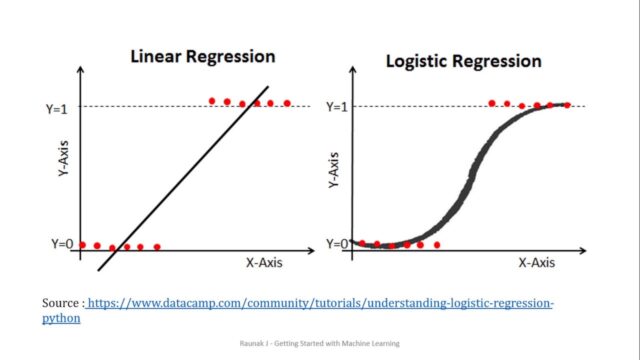Linear and Logistic Regression are popular techniques in the field of statistics and machine learning used for different types of tasks. It studies the relationship between two continuous variables. Linear regression’s assumption is that a linear relationship exists between the independent variable(s) and the dependent variable. Also, there is an assumption that the differences between observed and predicted values are independent of each other. The primary goal of this measure is to find the best-fitting straight line that describes the relationship between the independent variable(s) and the dependent variable.
It is represented by the equation y=mx+b where y is the dependent variable, m the independent variable, x represents the slope of the line, and b represents the y-intercept. Besides, it helps to predict measures such as prices of items such as houses based on size, number of bedrooms.

Logistic regression is the measure used when the dependent variable is categorical. Additionally, it is used for predicting categorical outcomes. Logistic regression predicts the probability that a given instance belongs to a particular category so that the ouput is a probability score between 0 and 1. Logistic regression utilizes logistic function of sigmoid function to model the probability. This is represented by the equation P(Y=1∣X)=1+e−(β0+β1X)1 where represents the probability of the dependent variable being 1 given the independent variable. E
perfect separation of the binary outcome variable by the predictor variables. APA
